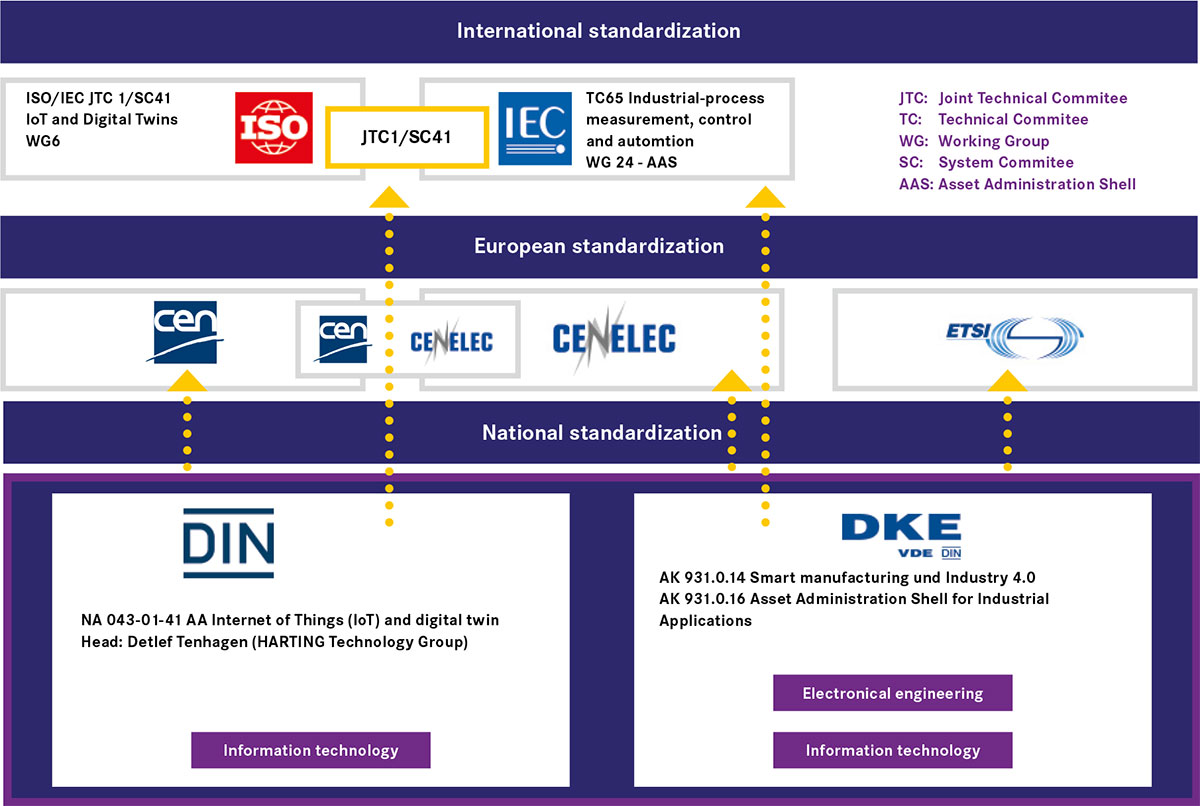The meaning and purpose of standardising digital twins
With regard to the megatrend of the "digital twin" in industry, and especially for Industry 4.0, the following applies:
The advancing digitalization in all companies as well as the data integration via cloud and edge infrastructures reaching deep into the shop floor require new standards for the successful introduction and beneficial implementation of digital twins.
The increasing convergence between IT (Information Technology: Web, Cloud, the office...) and OT (Operational Technology: Factory, process, the shop floor) represents another aspect of the digital twin that will bring about significant gains in the flexibility and resilience of value chains.
But it is only through consensual (ISO, IEC – DIN, DKE) – as well as consortial (IDTA) – standardization of these digital twins that the complete automation of interoperability in the context described above will become possible.
The most important foundation for this interoperability and coexistence of the different systems and stakeholders is formed in the fundamentals by consensual standardization by way of national (DIN/DKE), European (CEN, CENELEC, ETSI) and international bodies (ISO, IEC), acting as so-called standard setters. These organizations interact and cooperate closely with each other: Terms, reference definitions, structural concepts, meta-models of digital twins are standardised and thereby enable the cross-company applicability of the same – which is highly beneficial for all the stakeholders along the entire value chain.
From an industrial – i.e. OT – point of view, IEC 62378-1 is the most promising standard and is currently about to be published. It was developed by the International Electrotechnical Commission IEC, within its technical committee TC65, in its working group WG24 under German leadership and entails an asset administration shell. Further standard parts IEC 62378-2 on meta models as well as IEC 62378-3 on the security of the administration shell are currently being developed with the participation of HARTING.
From the IT point of view, the most important standard setters are the members of the (ISO/IEC) Joint Technical Committee JTC1, comprising the system committee SC41 "Internet of Things and digital Twins" within the WG6 "Digital Twin" working group. The definition of the digital twin, the systemic terms, its concepts as well as the formal requirements for use cases for the application of the same are currently being developed through the creation of a reference architecture as a basis.
The HARTING Technology Group has been proactively involved in both bodies right from the outset in terms of standardising the digital twin and, in doing so, promotes dissemination by applying this standard through use in the form of the asset administration,
We are implementing this – based on the work of the Industrie 4.0 platform - in the transition to the resulting consortial standardization of sub-models in the IDTA.
We are thereby creating multiple benefits for ourselves and our customers by providing the relevant product information by way of precisely these standards within the E-Shop for our products.

